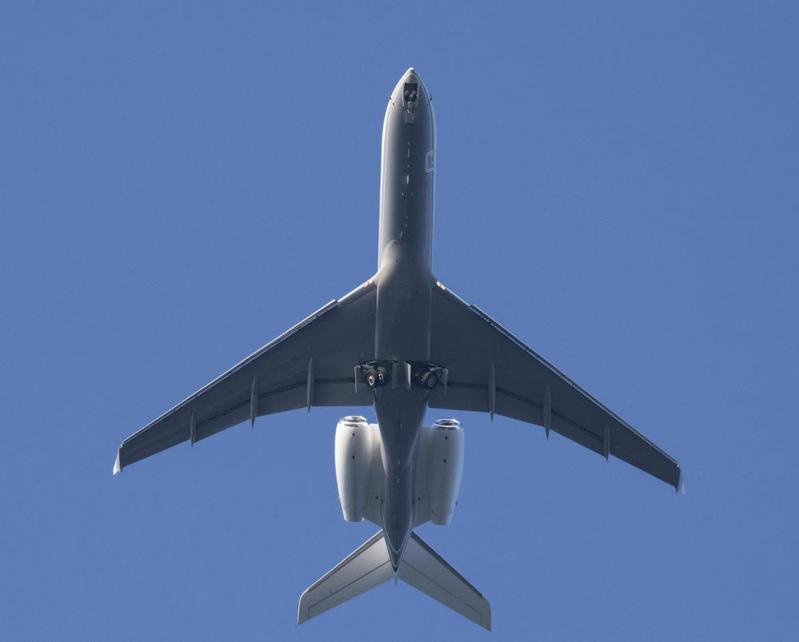“Don’t shoot the messenger,” was the plea from Jim Brundige, manager of East Hampton Airport, as he told the town board on Tuesday that air traffic so far this year was up 7.5 percent over 2018.
The midyear report, which closely followed urgent appeals from a number of people who live directly under flight paths into and out of the airport, suggested that by year’s end the airport could see a 10-percent uptick in traffic over last year, Mr. Brundige said.
Helicopter traffic, among the most frustrating for affected residents on the North and South Forks due to the aircrafts’ noise and low-altitude flights, accounts for about 30 percent of overall traffic, Mr. Brundige said. While helicopter traffic is down slightly from last year, July saw a 7-percent increase over the same month in 2018. Seaplanes, another source of ire, account for 10 percent of traffic, and are up slightly from last year. But over all there were 140 more operations in July than the same month last year.
It gets worse, Mr. Brundige told the board: From Aug. 1 to 15, total traffic numbered 3,886 operations, a 26-percent jump from the same period last year. Projecting that percentage increase on all traffic recorded in August of 2018, the airport would experience 8,673 operations, an increase of 1,789, or an additional 58 per day or 5 per hour, he said.
Complaints, commensurate with operations, are up as well: 4,136 were logged in July versus 2,291 in the same month last year. Many of these came from outside of the town, Mr. Brundige said.
The manager’s report followed public comment that was at turns plaintive and furious, some insisting that the town close the airport, which it would legally be permitted to do upon the expiration of federal grant assurances in 2021, or keep it open only to hobbyists and personal aircraft. “As the airport gets busier and busier . . . people below the North Shore helicopter route, their quality of life is going down, down, down,” said John Cullen. “I’m getting crushed by these helicopters and seaplanes. . . . I’m asking, when you get control of your airport, that you close it, or have them go a different way.”
Sandy Mancini told of witnessing a near midair collision of a helicopter and seaplane around 750 feet above her Bridgehampton house on Friday evening. She later learned that the aircraft had come within 280 feet of each other. “Peace is being shattered by the roar of helicopters and screams of jet engines,” she told the board.
“The noise, vibration, disruption — it’s horrible.”
Leo Yu, the youngest speaker regarding the airport, said that he lives two miles from it. He spoke eloquently about the impact of aircraft flying “a couple hundred feet above our chimney” every 100 seconds: noise, vibrations, “ever-present and mounting fear of a crash, elimination of peace of mind, and, most insidious, airplane fuel.” Jet engines render a conversation impossible. The board, he said, has a duty to act.
“I can’t say I’m surprised,” Supervisor Peter Van Scoyoc said to Mr. Brundige at the conclusion of the airport manager’s report. “It seems to me traffic has been much worse.” There have been several weekend days of low cloud cover, he said, forcing helicopter and seaplane pilots to fly at low altitude. “Low-flying altitudes occurring with the volume of traffic we’ve seen has a number of us concerned,” he said. “Today, we heard about a near-miss.”
The town board adopted laws establishing overnight curfews in 2015. A coalition of aviation interests calling itself Friends of the East Hampton Airport challenged the laws, and the restrictions were enjoined by a federal appellate court in November 2016, which ruled that the town cannot independently enact airport use restrictions but must follow the federal Airport Noise and Capacity Act and seek federal approval to do so.
The town has turned to a Part 161 study, an analysis it must complete in order to propose and enact noise or operational restrictions on aircraft. That is a long process, and has yet to succeed where it has been employed previously.
“This is an issue that’s not going away,” Mr. Van Scoyoc said, “one we’re going to be faced with, charting a path forward as grant assurances run out, to really deal with this problem in an effective way.” He spoke of “growing concern and pressure” from residents who say that the airport should be closed, absent enforceable restrictions on operations. “We will be challenged as a board to chart that path and engage the community in a constructive dialogue . . . as grant assurances do expire.”

